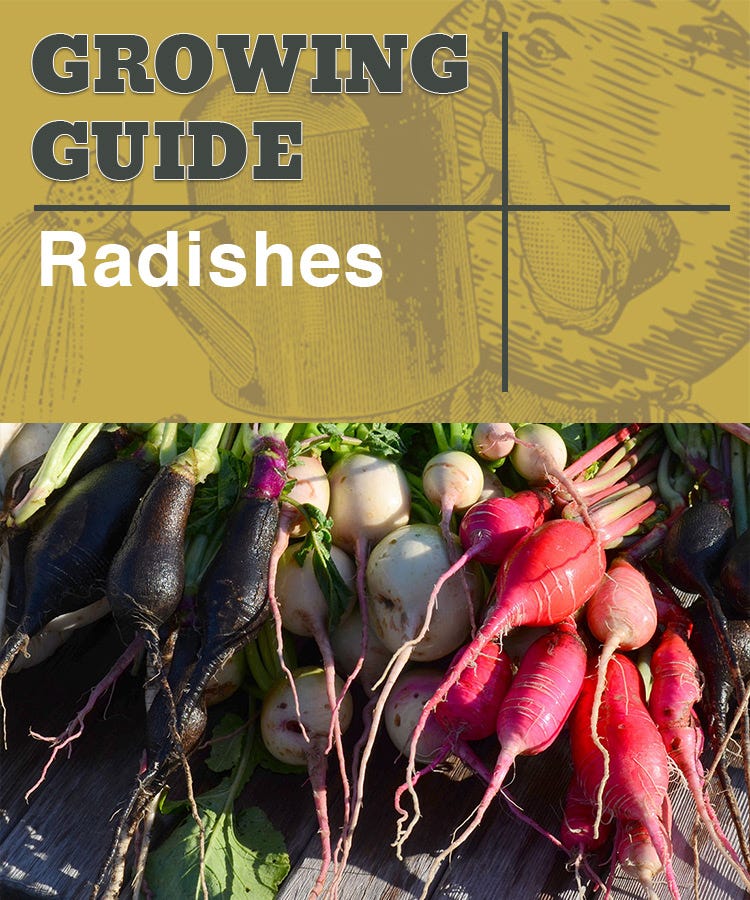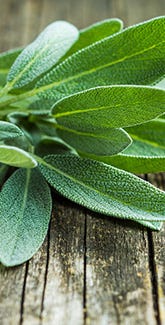Your Garden Will Look Radishing!


Radishes Growing Guide
Most people think of radishes as being small, red, and round, but many of the most popular varieties offer something deliciously different. There's the Philadelphia White Box radish, which is white in color with a sweet and spicy flavor. And the French Breakfast radish that's oblong in shape, rich red at the top, and bright white at the root with a flavor slightly milder than other varieties but still with a spicy zest. Whatever the variety or varieties you choose, radishes are notorious for being very rewarding to grow. That's because they're super easy, very hardy, quite speedy, and definitely flavorful.
Sowing: Radishes should always be planted in succession plantings every 10-14 days from the earliest possible time in the spring (when the ground can be worked) until early summer. For a fall crop, start 6-8 weeks before the first frost date. Plant seeds for small radishes ½ inch deep in rows 6-8 inches apart. Thin seedlings to 2-3 inches apart. Plant seeds for large radishes 2 inches apart in rows 18 inches apart. Thin seedlings to 4-6 inches apart.
Growing: Radishes grow quickly, some maturing in just 3 weeks from seed in cool weather. This makes them an ideal crop for successive plantings so you'll have continuous crops all season long. Radishes are also extremely easy to grow so you really can't go wrong, but they do prefer well-drained soil that's kept consistently moist. So be sure to water regularly but do not overwater to the point that the plants become waterlogged.
Picking: Harvest small, round radishes when they are the size of large marbles. Do not leave radishes in the ground because they will quickly become woody and tough. Radishes can be harvested and stored in plastic bags in the refrigerator and will keep their flavor and crispness for weeks. Large radishes should be harvested before the first hard frost.
Eating: Did you know that radishes are a great detoxifier? They have a unique ability to cleanse the liver and kidneys and purify the bloodstream, making them highly effective in treating ailments like jaundice and urinary tract infections. They're also very high in fiber and rich in vitamins and nutrients like folate, riboflavin, potassium, copper, vitamin magnesium, manganese, and calcium.
Knowing: The name radish comes from the Latin word radix, which means "root." And the genus name Raphanus is a Latinized form of a Greek expression raphanos, which means "easily reared."
Container Friendly? Radishes are root vegetables so container planting can be challenging unless you choose one of the smaller varieties. If space is limited making container planting ideal, choose a variety like Philadelphia White Box, which will produce pristine white radishes that will be perfectly round and about an inch in diameter.



